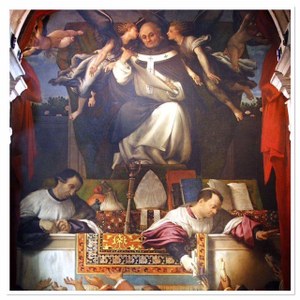In the late 19th century when archaeology became an organized science the paintings of Renaissance painters became much more important in the world of Oriental carpets. It was a period in which scientists and collectors alike took an interest into preserving Oriental carpets. All this started when Julius Lessing, a German art historian and the first director of the Berliner Kunstgewerbemuseum, wrote a book on Oriental carpet designs in 1871. He mainly used Renaissance paintings with Oriental carpets in it to compile this book, since collecting Oriental carpets did not yet exist.
The precise realism practiced by Renaissance artists during the 15th and 16th centuries resulted in them producing much more realistic paintings of the actual setting that they were painting. In those days it was only the Royals and Elite that could afford Oriental carpets and have their portraits painted in their finest dress surrounded by their valuables that naturally included their unique Oriental rugs. The painters’ precision showcased the carpets’ finest details that made it possible for Julius Lessing to date the carpets in his book. With the aid of these paintings and the knowledge of who painted it and when, he and his successors developed the “ante quem” method for dating Oriental carpets. It would be this work that would start the antique trade in Oriental carpets in earnest, since many people then realized that their family heirlooms was in fact much older and much more valuable than they knew.
Many famous painters used Oriental carpets in their paintings and due to the lack of classification of Oriental carpets in the Renaissance era, the specific type of carpets used by them was named after them. The more famous of these are: Holbein, Lotto, Memling, Bellini, Crivelli, Ghirlandaio, Van Eyck and Petrus Christus. As surviving pieces of these painters’ carpets were found, they were allocated the appropriate names based on where they were woven and by whom.
As is always the case it is the artists that preserve history for future generations and thanks to their art we can recollect how our ancestors lived and what was important to them.
By Vanessa Ghorbany
References



